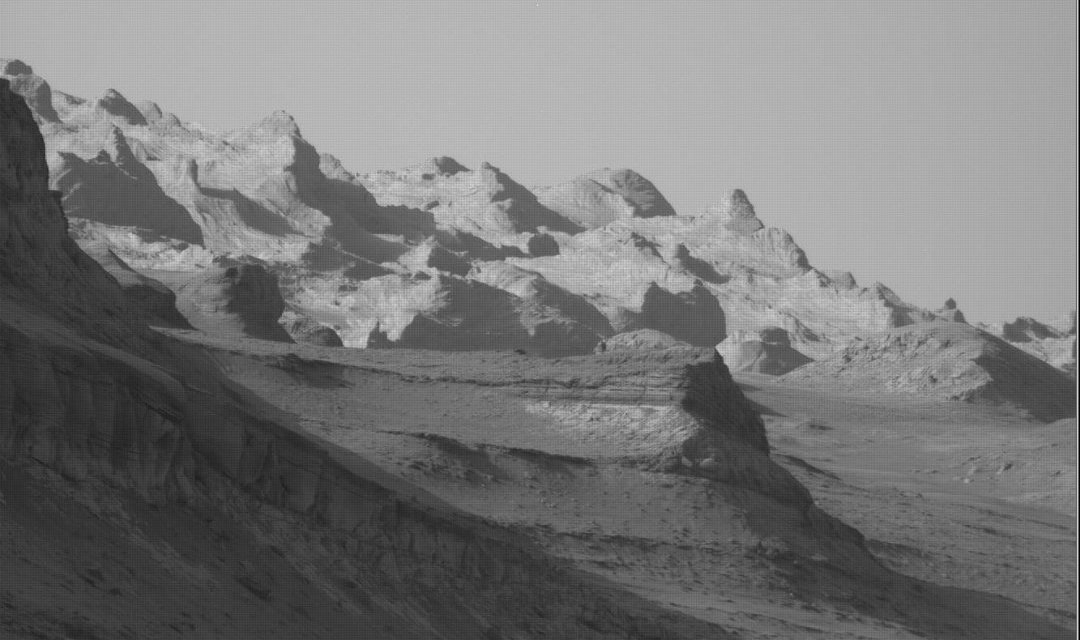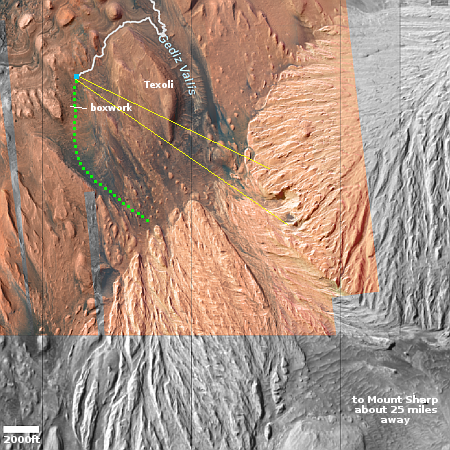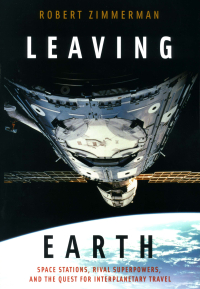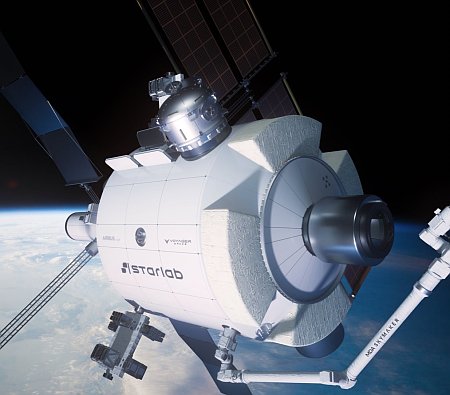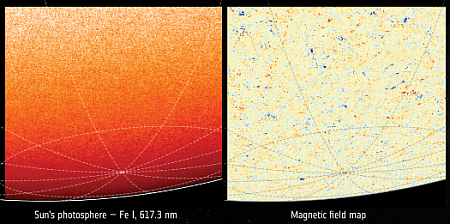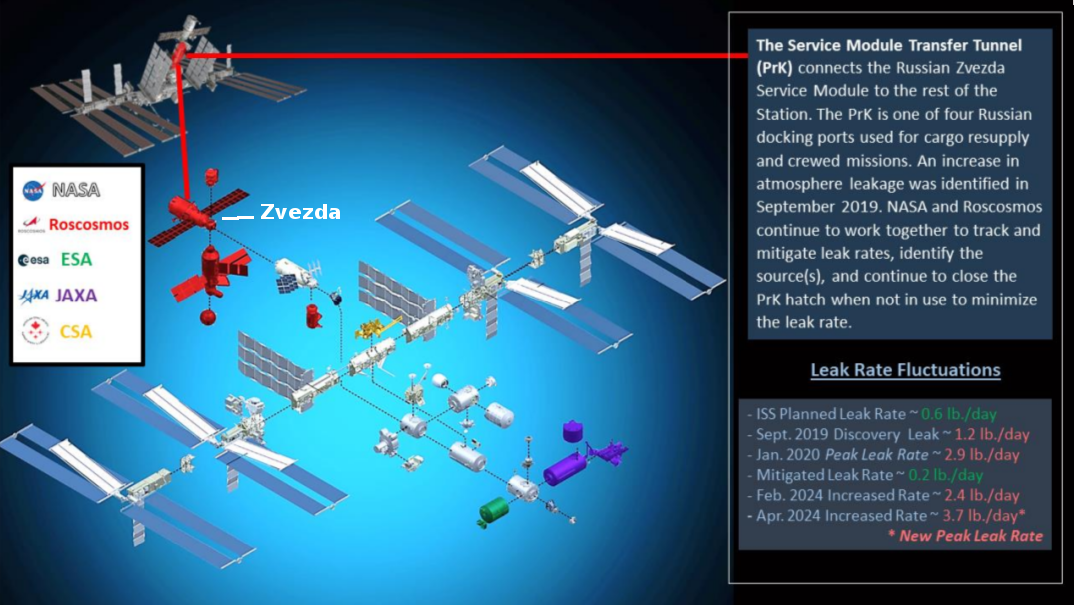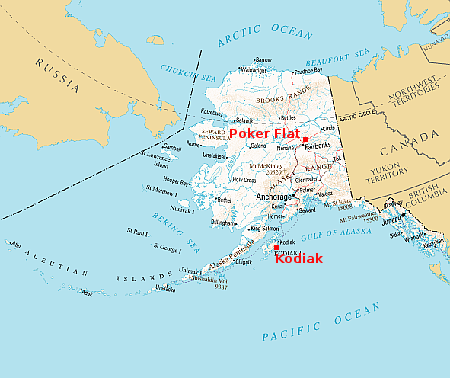Axiom manned flight to ISS rescheduled; NASA attempts to clarify ISS leak situation
In a NASA update today, it announced a new launch date of June 19, 2025 for Axiom’s fourth manned flight to ISS while also attempting to clarify ISS leak situation that caused this last and more extended delay.
On June 12, NASA and Axiom Space delayed the mission as the agency continued to work with Roscosmos to understand the most recent repair efforts to seal small leaks. The leaks, located in the aft (back) most segment of the International Space Station’s Zvezda service module, have been monitored by flight controllers for the past few years.
Following the most-recent repair, pressure in the transfer tunnel has been stable. Previously, pressure in this area would have dropped. This could indicate the small leaks have been sealed. Teams are also considering the stable pressure could be the result of a small amount of air flowing into the transfer tunnel across the hatch seal from the main part of space station. By changing pressure in the transfer tunnel and monitoring over time, teams are evaluating the condition of the transfer tunnel and the hatch seal between the space station and the back of Zvezda.
It appears, though NASA doesn’t say so directly, that the Russians did not wish to change the situation at ISS with another docking — even if it was a docking on the American half of the station — while it was evaluating these leak repairs. It now appears they have gotten enough data to allow NASA to set a new launch date later this week.
If the repairs have managed to stop the leaks this is excellent news. At the same time, it doesn’t reduce the risks of a catastrophic failure of Zvezda, since the existence of these numerous stress fractures in its hull suggest a chronic long term failure that can only worsen with time.
The sudden delay of Axiom’s AX-4 last week also indicates poor coordination between NASA and Roscosmos. It was as if NASA had no idea the repair work was occurring, either because it wasn’t paying attention to what the Russians were doing or because the Russians had kept this work secret until it was completed. In either case, this is not how such a partnership should operate.
In a NASA update today, it announced a new launch date of June 19, 2025 for Axiom’s fourth manned flight to ISS while also attempting to clarify ISS leak situation that caused this last and more extended delay.
On June 12, NASA and Axiom Space delayed the mission as the agency continued to work with Roscosmos to understand the most recent repair efforts to seal small leaks. The leaks, located in the aft (back) most segment of the International Space Station’s Zvezda service module, have been monitored by flight controllers for the past few years.
Following the most-recent repair, pressure in the transfer tunnel has been stable. Previously, pressure in this area would have dropped. This could indicate the small leaks have been sealed. Teams are also considering the stable pressure could be the result of a small amount of air flowing into the transfer tunnel across the hatch seal from the main part of space station. By changing pressure in the transfer tunnel and monitoring over time, teams are evaluating the condition of the transfer tunnel and the hatch seal between the space station and the back of Zvezda.
It appears, though NASA doesn’t say so directly, that the Russians did not wish to change the situation at ISS with another docking — even if it was a docking on the American half of the station — while it was evaluating these leak repairs. It now appears they have gotten enough data to allow NASA to set a new launch date later this week.
If the repairs have managed to stop the leaks this is excellent news. At the same time, it doesn’t reduce the risks of a catastrophic failure of Zvezda, since the existence of these numerous stress fractures in its hull suggest a chronic long term failure that can only worsen with time.
The sudden delay of Axiom’s AX-4 last week also indicates poor coordination between NASA and Roscosmos. It was as if NASA had no idea the repair work was occurring, either because it wasn’t paying attention to what the Russians were doing or because the Russians had kept this work secret until it was completed. In either case, this is not how such a partnership should operate.



